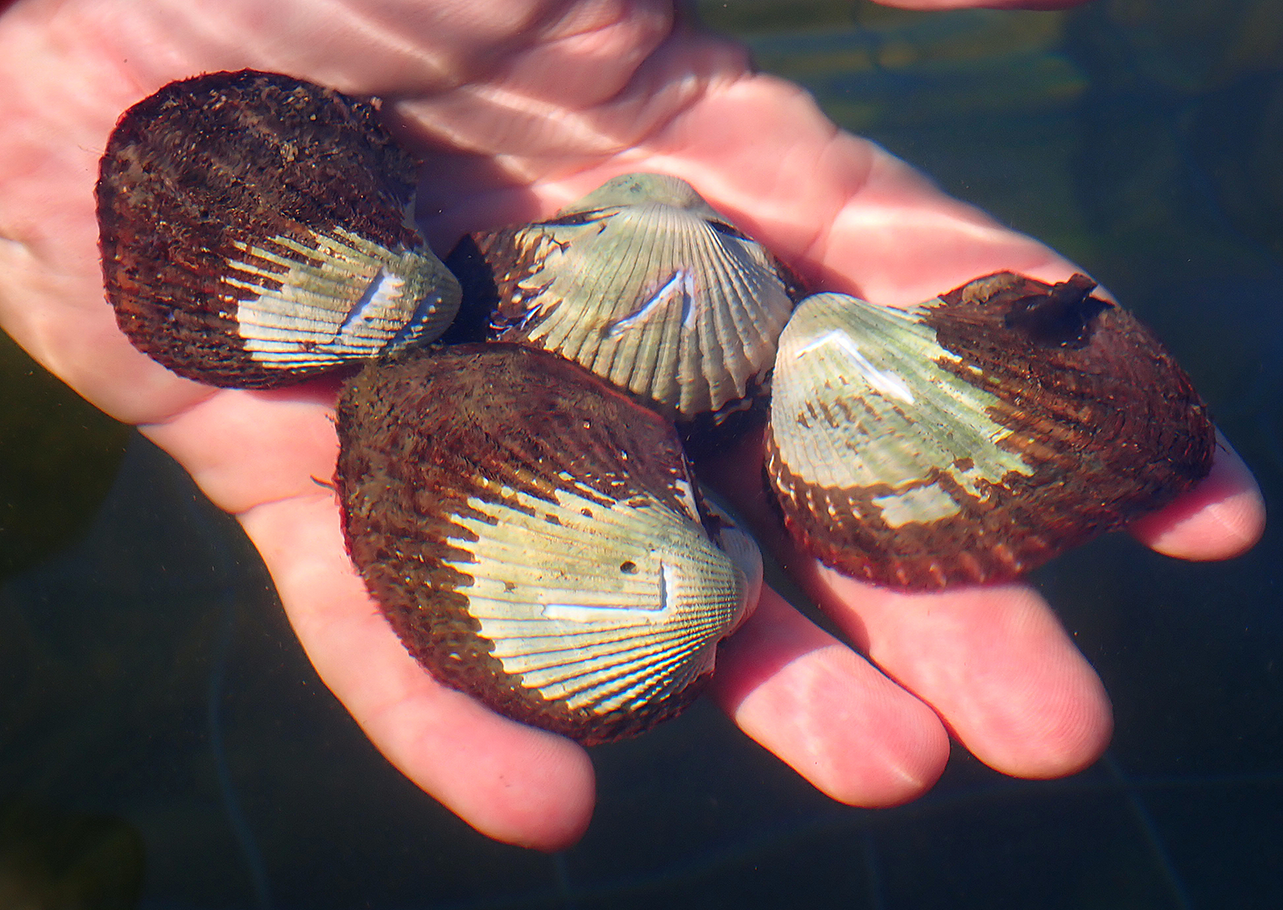New research is putting Sydney Cockles (Anadara trapezia) in the spotlight, gathering baseline data about the biology and ecology of this popular edible shellfish commonly found in NSW estuaries.
By Brad Collis
Although found widely along the New South Wales coastline, surprisingly little is known about the biology of the humble Sydney Cockle – a situation researchers are now addressing.
The bivalve mollusc supports highly valued commercial, recreational and Aboriginal fisheries along the NSW coast.
With anecdotal evidence that cockle catches are increasing, NSW Department of Primary Industries – Fisheries (DPI Fisheries) identified that more information was needed about the species lifecycle and the impacts of harvesting.
FRDC’s NSW Research Advisory Committee made this a priority, and the Sydney Cockle is now the focus of FRDC-Project 2021-003. Work on the project began in March 2023, gathering the genetic, biological and ecological data needed to support future fisheries management.

The tagging of cockles at sites in Lake Macquarie and Wallis Lake will provide the basis for information on the cockle lifecycle.
Tagged cockles
Principal investigator, Dr Matt Taylor, at DPI Fisheries, explains that 24 fixed research plots have been established across Lake Macquarie and Wallis Lake in both seagrass meadows and unvegetated soft sediment. In total, almost 1000 cockles have been tagged in these plots.
The tagging has involved etching the hard cockle shells with marks like the hands of a clock; each angle slightly different, to establish a visual code for each animal for long-term observation.

“We only need about 40 different codes because that’s how many cockles we are studying in each plot,” says Matt. “The procedure is to go back every couple of months, look at who’s still there, measure them and gradually build up data on growth, recruitment, movement, and mortality.”
Cockle abundance and size is being monitored in both shallow water populations, and in deeper waters – too deep to wade in. To survey cockles in the deeper water the researchers modified an off-the-shelf recreational scallop dredge which can be towed behind a small boat.
Cockles collected from these surveys are being used to understand the structure of the stock and how it might differ across the state. This work is being done in collaboration with the University of the Sunshine Coast.
The University of Adelaide is also collaborating on efforts to develop aging techniques for the species. Matt explains that the addition of calcium carbonate layers evident on the shell as the animal grows, can indicate the age of many marine organisms.
“We first had to determine the time period the banding represents, and this is still being analysed.”
The cockle surveys are also collecting reproductive data which has included a small percentage of hermaphrodites – producing both male and female reproductive cells – which Matt says is not uncommon in bivalve molluscs.
Freshwater impacts
Matt highlights the potential impacts of recent floods on cockle populations based on study observations so far.
In early 2023 Matt checked locations across northern NSW that had been surveyed for cockles in the 1970s, and while he found cockle shells, there were few living animals.
He suggests freshwater flushes from floods may have caused population numbers in estuaries to decline. Coastal lagoons that didn’t have as much freshwater input seemed to still be supporting strong cockle populations.
“Cockles don’t tolerate low salinity for extended periods and will close up when the water is not suitable, but there’s a limit to how long they can stay like that before they need to breathe and feed. Mortality from salinity stress sets in after a week or so.
“Of course, the absence of cockles in some estuaries is just based on a single set of observations. How much we can read into this is yet to be tested,” Matt added.
Baseline Data
The study will continue for the next two years, during which time the researchers will measure fluctuations in population biomass and temporal patterns in reproduction rates, age and mortality across key estuaries.
Matt says that despite the species being such a ubiquitous presence in coastal environments in NSW, the research has had to start at a baseline level.
“There's never really been an encompassing project like this that's trying to cover off a range of basic parameters needed to manage the fishery well. And that's what we're hoping to establish.
“And it’s a great project for fishery ecologists like me, because we get to study basic ecology at the same time as generating important data that is critical for stock assessment and the species’ future management.”
Related FRDC Project
2021-003: Maintaining productivity and access to Estruary Cockle across sectors through improved science-based decsion making





